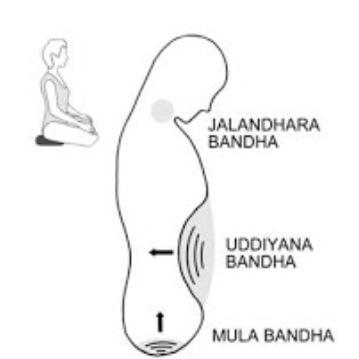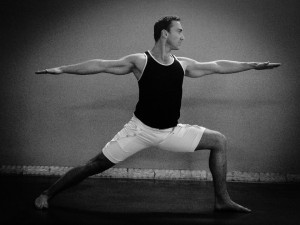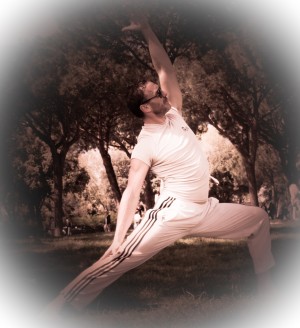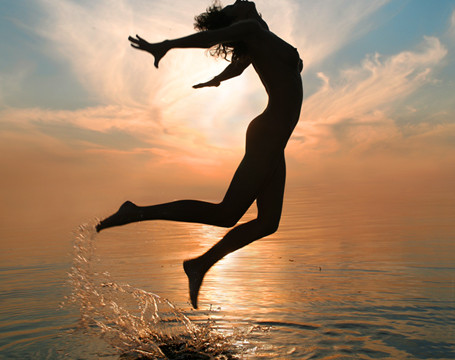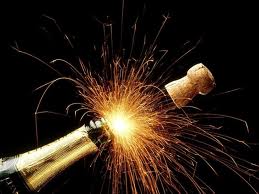HOW TO IMPROVE THE YOGA PRACTICE WITH THE BANDHAS
Together with Pranayama and the breathing techniques, we can complement and improve our practice introducing some more “moves” that go along with the asanas: the Bandhas.
The word Bandha means “a lock” and according to the Yoga Sutra, a sort of Yoga Bible, it refers to the binding of consciousness to a particular object or place (Desha) which is the very essence of concentration.
On a more physical approach, the term is related to a specific muscular contraction to perform on some organs or body parts in order to increase physical strength, muscular control, spine support and to ultimately convey the subtle energy and raise it upward.
Like when we have electricity and require wires, transformers, cables and switches to transfer power to destination, in the same way, our bodies need tools to channel energy (or prana) and take it to the right places with no dispersion and without causing any harm.
Blocking the energy flow to a particular area and then releasing it, allows the energy to flood more vigorously through the body with an increased pressure.
This leads to expanded breathing capacity and enhanced sensation of feeling stronger and lighter during the practice and, therefore, the added ability for the practitioner to perform more yoga movements with better alignments.
While in Ashtanga yoga (or most dynamic forms) the Bandhas are performed throughout the session together with the postures, other practices include them only during breathing exercises or meditation.
Let’s explore them more closely now!
There are three main Bandhas:
Mula Bandha, or anal/root lock:
it can be done after both inhalation and exhalation contracting the perineal area in between the genitals and anus (in women is better located near the cervix above the pelvic floor), a movement that resembles the one we use to control the urge to urinate and it is similar to the Kegel exercise, well known in the western world.
The direct benefits are the strengthening of the pelvic floor (with more blood and health for the genitals), stimulation of both endocrine and excretory systems, the calming of the autonomic nervous system and the relaxation of mind.
Energetically, there is a purification and activation of the muladara Chakra ,the root energy center that holds the kundalini, a sacred dormant energy that slowly (preferably) awakens and rises up through the other chakras in the form of pure consciousness.
This may lead to a feeling of “lightness” on the limbs while practicing and to that sensation of “floating” at the end of the class due to the constant flowing up of energy.
Uddyana Bandha or the lifting of the diaphragm:
performed after the exhalation, lifting the low abdominal muscles and pulling them in and up into the abdominal cavity as far as possible. After holding the position as long as comfortable, the tension can be released returning to the starting point with a deep inhalation.
The very meaning of the Sanskrit word uddyana is “flying up” and once again the focus is all on lifting energy.
Considered a more advanced technique, it can support a number of movements such as twists, inversions and jumps while massaging the deeper internal muscles of the lower back and strengthening this area.
Recommended exclusively with an empty stomach and with the diaphragm and the lower part of the ribcage kept soft, this lock also improves the action of mula bandha reinforcing the immune system, stimulating the pancreas and supporting intestinal activity with a relief for constipation.
Jalandhara Bandha or Chin/Throat Lock:
It is practiced after the inhalation as well as the exhalation and consists of moving the chin down toward the chest and the chest toward the chin. The throat is contracted in order to control the escape of breath and energy of the body whilst regulating the flow in the nerves and blood vessels of the neck.
Usually accompanied by breathing exercises and rarely done on its own, this bandha is naturally engaged in the shoulder-stand position (Salamba Sarvangasana) where the curve of the neck spontaneously pushes the chin forward and increases the progress of energy in that area.
With the compression of sinuses on the main arteries of the neck, there is a better regulation of the circulatory and respiratory systems while improving the ability to retain the breath for longer periods with an increment of concentration.
This is why it is especially beneficial for any throat disease and any thyroid/metabolism-related complication.
When we apply the three locks together we have Maha Bandha ( Maha = great) or “master lock”.
Here, all the benefits from the previous Bandhas merge together putting the body in a perfect healing state: there is a better regulation of circulation, blood pressure, muscles, nerves, internal organs, endocrine and automatic nervous system while menstrual cramps and other ailments can be gradually alleviated.
Usually performed in sitting positions (crossing legs) holding the breath out, the three Bandhas are progressively engaged, one after the other, as long as possible. Then, all the locks are released after a full inhalation.
Besides different traditions and styles, Bandhas are so powerful that were once considered, by the ancient yogi philosophers,fundamental tools to master the practice and even start a rejuvenation process taking the whole YOGA experience, both “external” (form, alignments etc.) and ” internal”(concentration, focus etc.), to the next level.
.
.

